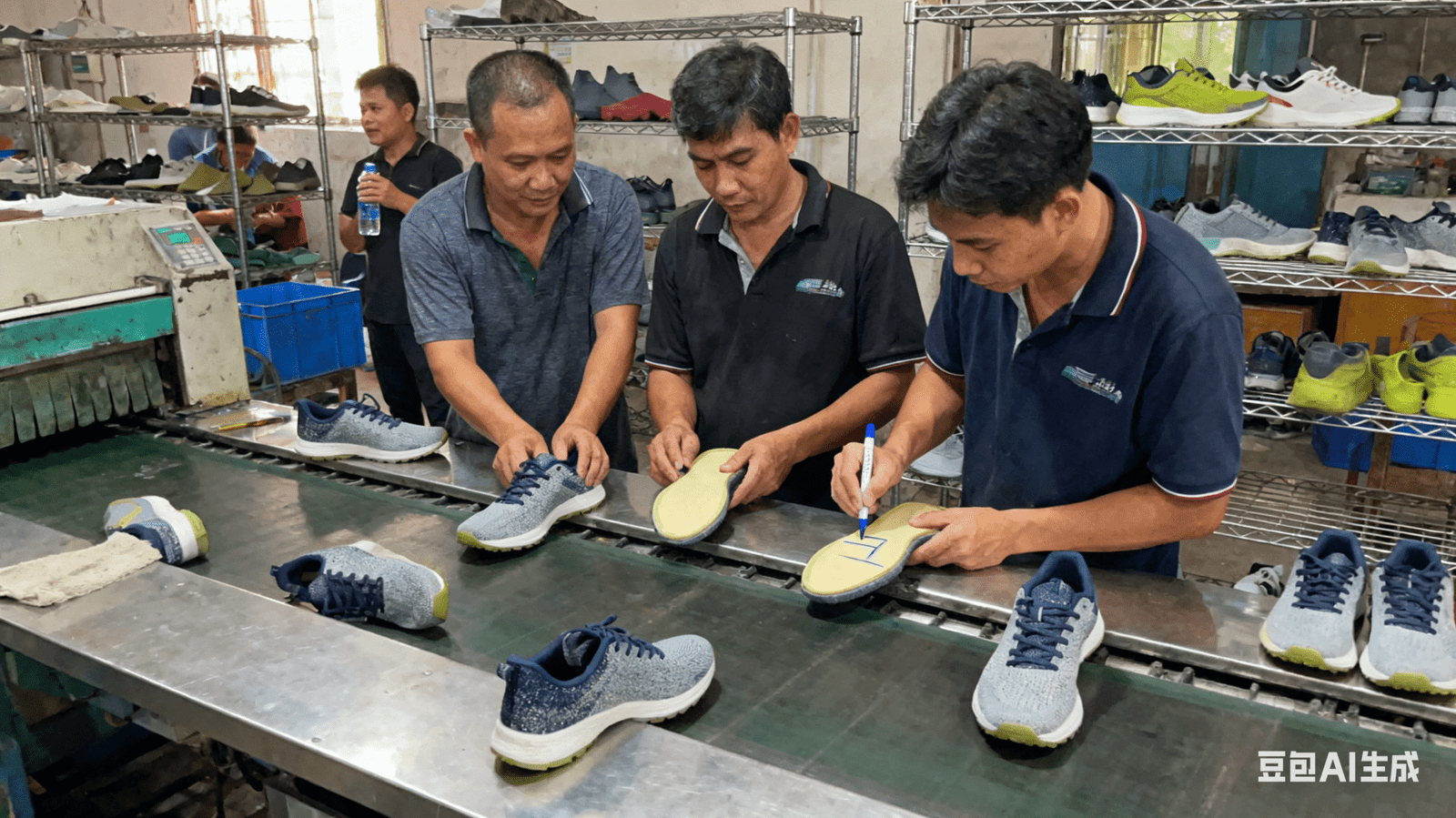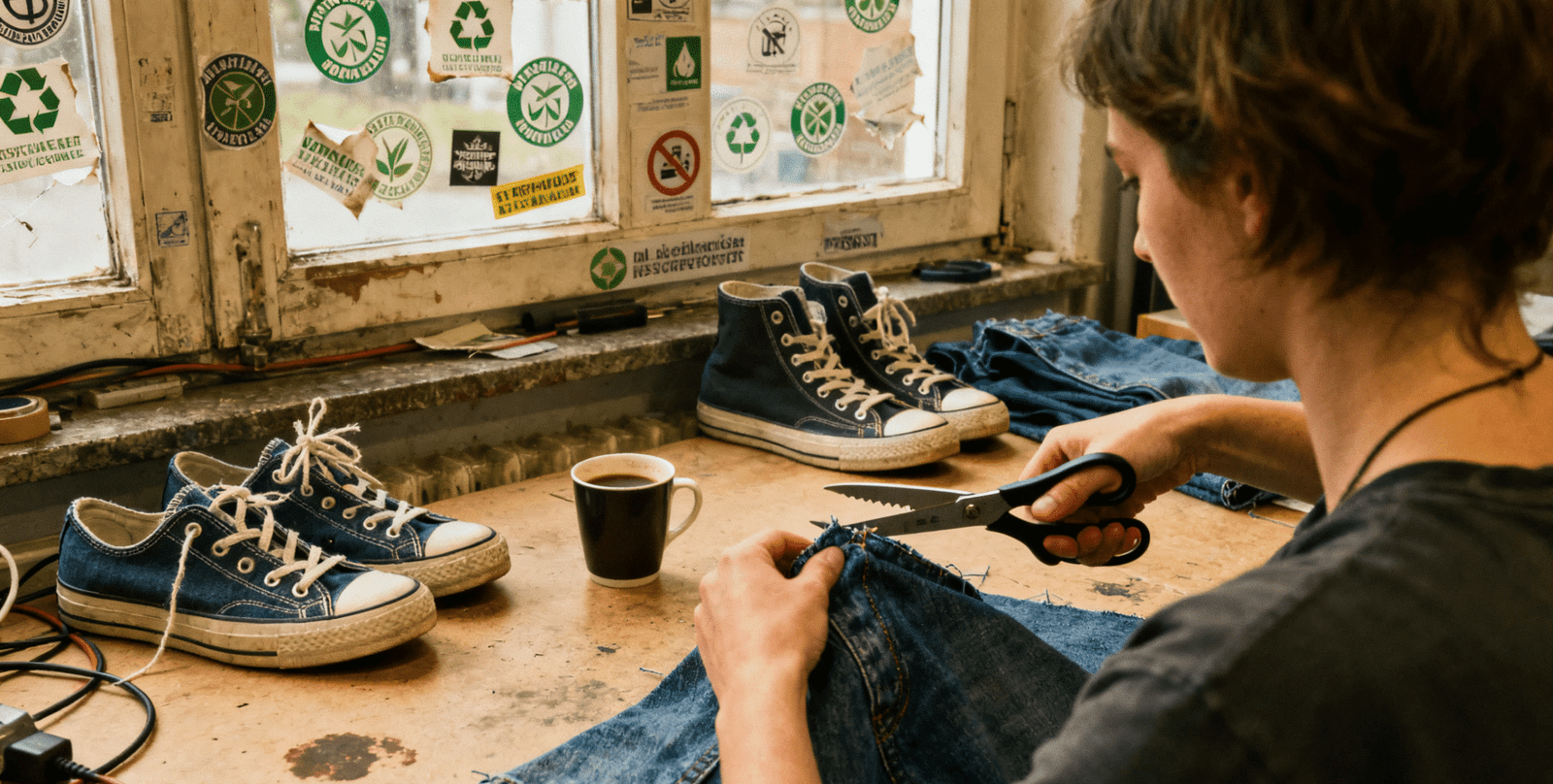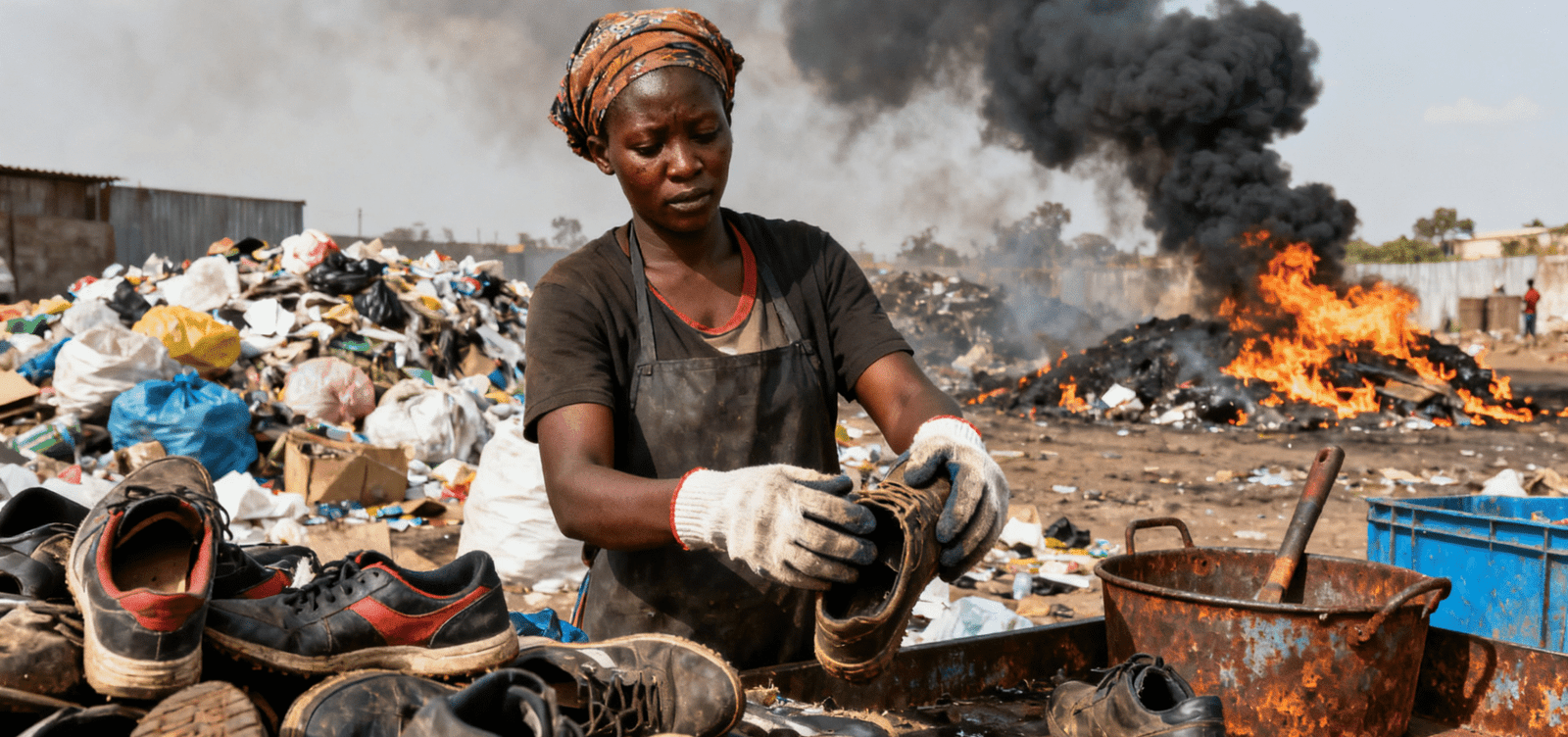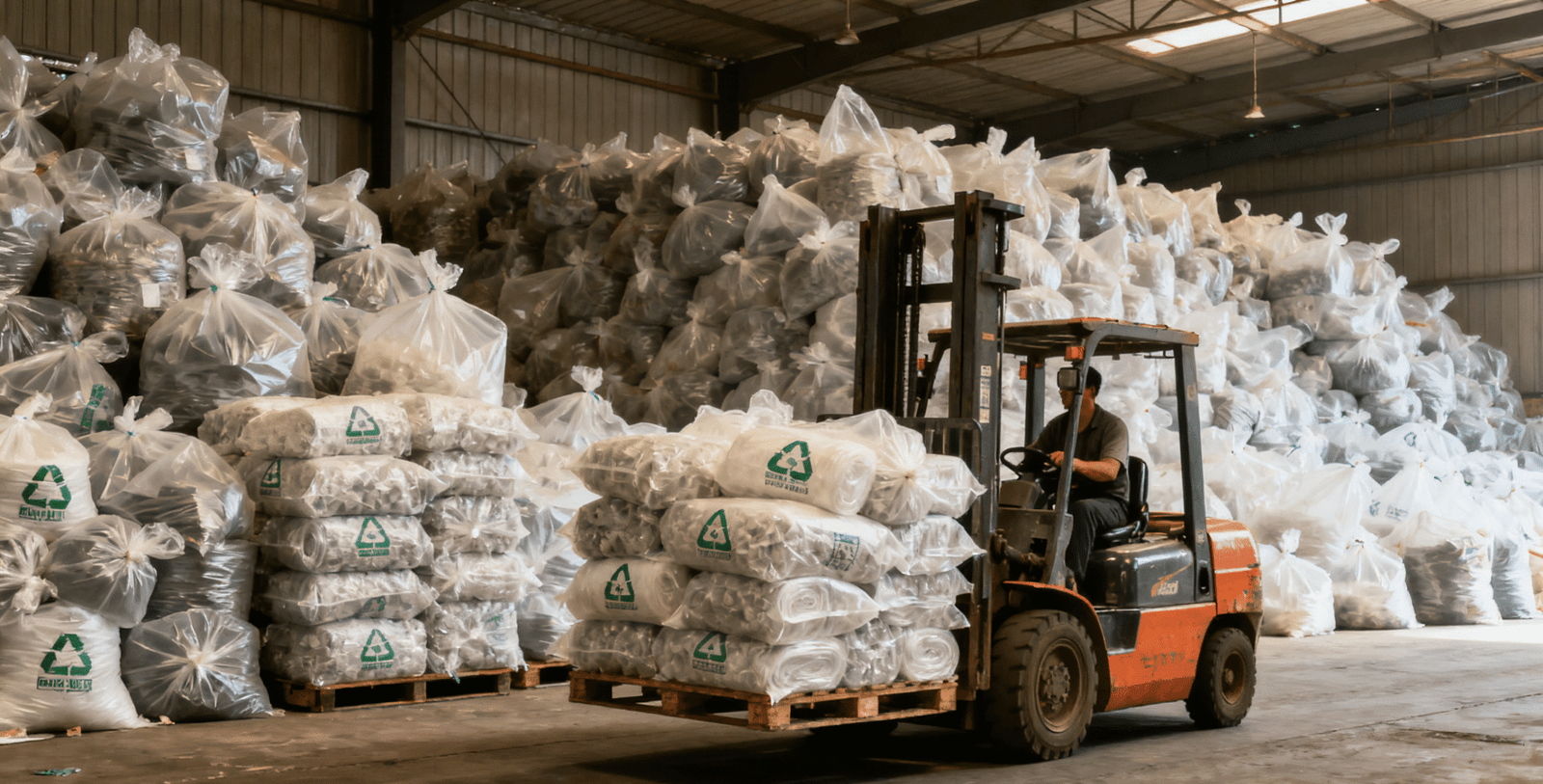Problem: The global footwear industry often faces criticism for its environmental and social impact, from resource-intensive production to questionable labor practices. Agitation: It's easy to feel pessimistic about the possibility of truly responsible shoe manufacturing, wondering if any real progress is being made. Solution: But what if certain countries are actively leading the charge, pioneering new methods and setting higher standards for sustainable shoe manufacturing? Let's explore why some nations are becoming beacons of ethical and eco-friendly footwear production.
Some countries are pioneering sustainable shoe manufacturing due to a combination of stringent environmental regulations, strong government incentives for green industries, a highly skilled workforce open to innovative practices, and a consumer base with growing demand for ethical products. These nations are investing in advanced technologies, circular economy principles, and transparent supply chains, establishing themselves as leaders in responsible footwear production.

Which Countries Lead in Sustainable Shoe Manufacturing? Problem: When we think of shoe manufacturing, our minds might default to traditional high-volume production hubs, often without an immediate association with sustainability. Agitation: It's not always clear which nations are genuinely investing in and championing eco-friendly and ethical practices within the footwear industry. Solution: Let's identify the countries that are emerging as leaders in sustainable shoe manufacturing, highlighting the factors that position them at the forefront of this crucial industry shift.
While traditional manufacturing hubs are adapting, countries like Portugal, Italy, Germany, and parts of the United States are emerging as leaders in sustainable shoe manufacturing. Their leadership stems from a combination of advanced technological infrastructure, a strong focus on innovation, robust environmental regulations, skilled labor, and a consumer base that increasingly values transparency and ethical production, pushing for recycled materials, reduced waste, and fair labor practices.

What factors drive leadership in sustainable shoe manufacturing?
These countries consistently share several core strengths that position them as leaders in sustainable footwear:
- Strong Regulations and Policy Support: These nations often have very strict environmental laws. These laws govern waste management, emissions, and the use of chemicals. They also offer direct incentives. These incentives help companies adopt greener technologies. They promote sustainable practices. This creates a regulatory environment that encourages responsibility.
- Technological Innovation and Research & Development: High investment in R&D is common. This leads to the development of new sustainable materials. Examples include bio-based leathers and advanced recycled synthetics. It also drives energy-efficient production methods. It promotes automation that helps reduce waste and resource consumption.
- Skilled Labor and Craftsmanship: Many of these leading countries have a long, rich history of high-quality shoemaking. This means they have a highly skilled workforce. This workforce can adapt to complex sustainable techniques. This also helps ensure that ethical labor standards are maintained throughout the production process.
- Consumer Demand and Awareness: A significant and growing segment of the consumer base in these nations prioritizes sustainability. These consumers are actively seeking out and often willing to pay a premium for ethically produced goods. This creates substantial market pressure. This pressure encourages brands to adopt greener practices.
- Embracin
 g Circular Economy Principles: These countries are leaders in embracing circular economy models. Their focus is on designing products for longevity and durability. They promote repairability. They also emphasize recyclability. The goal is to keep materials in use for as long as possible. This minimizes waste and maximizes resource efficiency.
g Circular Economy Principles: These countries are leaders in embracing circular economy models. Their focus is on designing products for longevity and durability. They promote repairability. They also emphasize recyclability. The goal is to keep materials in use for as long as possible. This minimizes waste and maximizes resource efficiency.
Who are the key players and what defines their approach?
Several countries stand out for their distinct approaches to sustainable shoe manufacturing:
- Portugal: Portugal has a strong tradition of quality footwear production. Many small to medium-sized factories are present. They are adopting advanced sustainable materials and processes. They often use vegan leather alternatives. These include pineapple leather and mushroom leather. They also integrate recycled materials. They implement water-saving technologies. Portuguese manufacturers often emphasize local sourcing. This is done to reduce their carbon footprint.
- Italy: Italy is renowned for its high-quality craftsmanship. It is also leading in innovative bio-materials. Examples include apple leather and wine leather. Italian manufacturers are pioneering next-generation vegan leathers derived from agricultural waste. They also use recycled materials. But they always maintain a strong focus on artisanal quality. They excel in developing eco-friendly glues and dyes.
- Germany: Germany has a strong engineering tradition. This translates into a focus on advanced recycling technologies. They also prioritize circular design. They have very strict environmental standards, especially regarding chemical management. German companies often focus on durability and repairability. The aim is to reduce waste across the entire product lifecycle. They are leaders in recycling technologies for textiles and rubber.
- United States: The US is a hub for innovation in material science. There's a growing focus on localized production. This helps reduce transport emissions. It’s also developing new recycling methods. The country is seeing a rise in B Corp certified companies. While some mass production moved overseas, specialized US manufacturers focus on highly sustainable, often smaller-batch production. They experiment with cutting-edge materials and zero-waste manufacturing concepts.
- Scandinavia (e.g., Sweden, Denmark): These countries place a strong emphasis on minimalist design. They also prioritize ethical production. They embrace circularity and transparency. Scandinavian brands often lead in using recycled materials. They also focus on modular design for easier repair. They provide transparent reporting on their environmental footprint. They tend to have very high ethical labor standards.
These countries are not just manufacturing shoes; they are actively shaping the future of the footwear industry. They are creating viable models for how a responsible and forward-thinking industry can operate. This leadership pushes the entire industry, including companies like Lucas, to constantly innovate and improve our own sustainability practices wherever we operate globally.
How Does Sustainable Shoe Production Impact Global Supply Chains? Problem: The traditional global supply chain for footwear is incredibly complex, often involving materials sourced from one continent, manufactured in another, and sold in a third, leading to a massive carbon footprint and opacity. Agitation: It's hard to imagine how "sustainable" changes in one part of this chain can truly make a widespread difference across such a sprawling, interconnected system. Solution: Let's examine how the shift towards sustainable shoe production is fundamentally reshaping global supply chains, driving changes in material sourcing, manufacturing locations, logistics, and transparency.
Sustainable shoe production is significantly impacting global supply chains by decentralizing manufacturing, prioritizing localized sourcing and production to reduce transportation emissions, and fostering innovative partnerships for recycled and bio-based materials. It demands greater transparency and traceability from raw material to finished product, pushing for ethical labor practices, reduced waste, and a shift away from low-cost, high-volume models towards more responsible, resilient, and environmentally conscious networks that promote circularity and social equity throughout the entire value chain.
What are the key areas of impact?
The impact of sustainable shoe production ripples through every part of the global supply chain:
- Changes in Material Sourcing:
- Previously, the focus was often on finding the cheapest raw materials, regardless of their environmental impact or origin.
- Now, there is a significant shift towards using recycled materials (like recycled polyester from plastic bottles or nylon from fishing nets) and bio-based alternatives (such as materials derived from corn, sugarcane, or agricultural waste like pineapple leaves or grape skins for vegan leathers).
- There is also a growing push for localized sourcing. This means finding materials closer to the manufacturing facilities. This helps reduce transportation emissions. It also supports regional economies.
- Transparency in sourcing has become paramount. Brands must now know the exact origin of their materials. They must understand the environmental and social conditions under which they were produced. This demands deeper vetting of suppliers and robust certification processes.
- Evolution of Manufacturing Locations and Practices:
- Historically, manufacturing moved to countries with the lowest labor costs for mass production.
- While Asia remains a dominant manufacturing hub, there is a noticeable resurgence in manufacturing in regions like Europe (Portugal, Italy) and the Americas. This is partly driven by consumer demand for "made local" products. It is also driven by stricter labor laws and environmental regulations in these regions.
- Factory standards are rising. Brands are demanding higher standards from their manufacturing partners. This includes adherence to fair labor practices (often verified by certifications like BSCI or SEDEX) and strict environmental compliance (e.g., ISO 14001 certification).
- Factories are investing in more sustainable production methods. This includes using renewable energy sources, implementing water-saving technologies, and striving for zero-waste production goals.
- Transformation in Logistics and Transportation:
- The traditional model often relied on fast, but carbon-intensive, air freight for speed to market.
- Sustainable practices advocate for a deliberate shift away from air freight. Brands are increasingly opting for sea or rail transport, which have significantly lower carbon footprints. This requires more precise planning and longer lead times.
- Optimized packaging is also a key area. This means using recycled and recyclable materials for packaging. It also involves minimizing excess packaging. This reduces both material usage and overall shipping weight and volume.
- Integration of Circular Economy Principles:
- The traditional supply chain was linear: "take-make-dispose."
- Sustainable production is pushing for a circular model. This involves designing products with their end-of-life in mind. Shoes are being designed for easier disassembly and recycling. This allows components to be reused or recycled into new products.
- Take-back programs are becoming more common. Consumers can return old shoes to the brand for recycling or repurposing.
- Brands are also exploring and supporting resale and repair models. This extends the product life of shoes. This reduces the need for new production.
This shift creates a supply chain that is more complex to manage, but also more responsible. It requires greater collaboration among all partners. It requires significant investment in new technologies and processes. Ultimately, it leads to a more resilient, transparent, and ethical industry for footwear. This transition is not easy, but it is absolutely essential for the long-term viability and positive impact of the footwear industry globally.
Which Brands Are Producing Shoes Sustainably in These Pioneering Countries? Problem: It's one thing to hear that certain countries lead in sustainable manufacturing, but it's another to know which specific brands are actually making shoes there, and how they differentiate themselves through their sustainability efforts. Agitation: You want to support brands that genuinely commit to ethical and eco-friendly practices, but identifying them can be tough amidst all the marketing claims. Solution: Let's highlight some key brands producing shoes sustainably in these pioneering countries, showcasing their unique approaches to responsible footwear.
Many innovative brands are producing shoes sustainably in pioneering countries by focusing on specific eco-friendly practices. Veja (France/Brazil, with Italian materials) prioritizes fair trade, organic, and recycled materials. Allbirds (US/NZ) champions natural, renewable resources. Rothy's (US/China) transforms recycled plastic bottles into knit shoes. European brands like Ecoalf (Spain) utilize ocean plastics, while various smaller, artisan companies across Portugal and Italy are committed to local sourcing, ethical craftsmanship, and innovative bio-materials, leading the charge in truly sustainable production.

What are some leading examples of sustainable brands?
Here are some prominent brands and their approaches, often leveraging the strengths of the pioneering countries mentioned:
- Veja: This French brand has its production predominantly in Brazil, but heavily utilizes materials and expertise from countries like Italy for some of their ethical and innovative components. Their core focus is on ethical sourcing. They use organic cotton. They use wild rubber sourced directly from the Amazon. They also incorporate recycled plastic bottles. Their major distinguishing factor is their extreme transparency about their entire supply chain, from raw material to final product, and their commitment to fair trade principles for their suppliers. They intentionally avoid air freight to reduce their carbon footprint.
- Allbirds: While Allbirds has strong roots in the United States and New Zealand for R&D and design, their production often takes place with specialized partners globally, including in Asia, where they actively oversee sustainable practices. Their primary focus is on using natural, renewable materials. They are known for products made from Merino wool, eucalyptus tree fiber, and sugarcane-based EVA foam for soles. Their sustainability edge comes from transparently labeling the carbon footprint of every product. They consistently innovate with unique natural materials. They are also a certified B Corporation, meaning they meet high standards of verified social and environmental performance.
- Rothy's: Rothy's has a significant manufacturing presence in Dongguan, China, where they have invested heavily in their own vertically integrated factory. This allows them precise control over their unique sustainable process. Their main focus is on transforming recycled plastic water bottles into their signature seamless knit uppers using a proprietary 3D knitting process. Their sustainable advantage lies in this vertical integration. It allows them to tightly control their supply chain. They have achieved significant waste reduction in their knitting processes. They have already repurposed over 150 million plastic bottles into stylish footwear.
- Ecoalf: This pioneering Spanish brand is dedicated to creating fashion from recycled materials. Their production spans several countries, including Spain, China, and Portugal. Their unique focus is on utilizing various recycled materials that others might consider waste, including ocean plastic (through their "Upcycling the Oceans" project, involving fishermen collecting waste from the sea), recycled tires, and even coffee grounds. Their differentiating factor is their extreme dedication to showing that high-quality, fashionable goods can be made entirely from recycled waste, proving that materials can have multiple lives.
- Zouri Vegan Shoes: Based in Portugal, Zouri exemplifies brands leveraging the country's growing sustainable manufacturing capabilities. Their primary focus is on entirely vegan and ocean-friendly footwear. They specifically use plastic collected from the Portuguese coast in partnership with NGOs for local beach clean-ups. They pair this with organic cotton and natural rubber. Their sustainability edge is their localized production in Portugal. This provides clear traceability for all their vegan materials, and a direct, tangible link between their product and ocean clean-up efforts.
- Smaller European Artisanal Brands: Across countries like Italy, Portugal, and Germany, numerous smaller, highly specialized brands are focusing on truly ethical and sustainable production. They often prioritize local material sourcing, traditional craftsmanship, and fair labor practices within their own regions. Their differentiating factor is typically a focus on quality over mass quantity, often creating handcrafted pieces, and providing extremely transparent, small-batch production that consumers can feel good about supporting.
These brands, and many others like them, show that sustainable shoe manufacturing is not a singular approach. Instead, it encompasses a wide range of strategies. These range from ethical labor practices and innovative material science to circular economy principles and transparent supply chains. This diversity makes the future of footwear incredibly exciting and increasingly responsible.
Some countries are leading in sustainable shoe manufacturing due to strong regulations, technological innovation, and consumer demand. This shift significantly impacts global supply chains, favoring ethical sourcing, localized production, and circular practices. Brands like Veja, Allbirds, and Rothy's are pioneering these efforts, proving that high-quality, eco-friendly footwear is not only possible but becoming the new standard.
